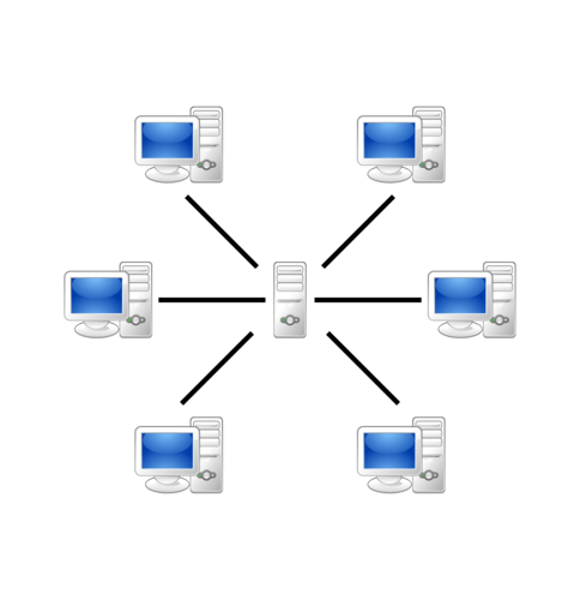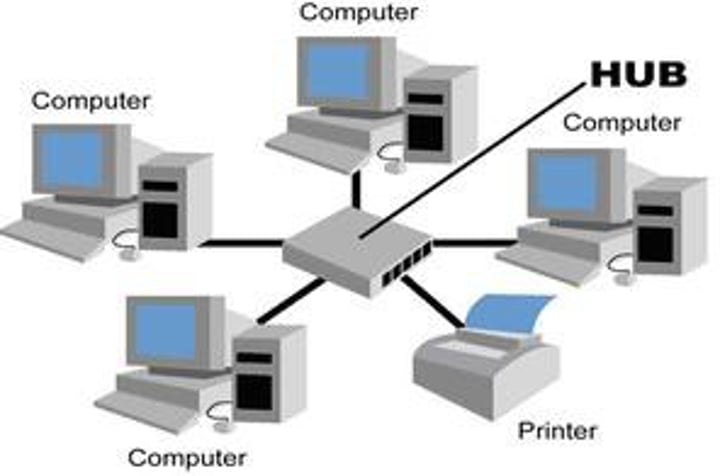paper 1
1/360
Earn XP
Description and Tags
Name | Mastery | Learn | Test | Matching | Spaced |
|---|
No study sessions yet.
361 Terms
Program Counter (PC)
Holds memory address of the instruction for each cycle
Magnetic storage
Hard drives
ADV: fast access, stores large amounts of data, low cost
DIS: not very portable, easily be broken
Solid State storage
USB, flash memory, SD
ADV: fast, small, light, easily potable, quiet
DIS: more expensive, storage capacity less, limited number erase/write cycles
Cloud storage
Data is stored on multiple servers in a remote location
ADV: secure, can be accessed anywhere, no need to buy
DIS: needs internet, download and upload can be effected by internet connection, less control if data is held
Operating System
essential software that links the hardware and other software together and generally manages the computer system
Utility Software
maintains a computer
Defragmentation Software
reorganises data on the hard drive to put fragmented files back together and moves files to collect all the free space
two types of backup software
Full Backup - a copy is taken from every file on the system
Incremental Backup - only files created or edited since last backup are copied
Router
responsible for transmitting data between networks
Packet Switching
split data into packets to be sent across the network, each packet given a number order of data, each router reads packet header and decides which way to send it according to IP rules, packets then arrive and reassemble them in the right order.
TCP/IP
sets of rules for how devices connect on the network.
Hyper Text Transfer Protocol (HTTP)
used to access websites and communicate with web servers
Internet Message Access (IMAP)
used to retrieve emails, server holds until you actually delete it- only download a copy
Data link Layer
passing data over physical network-
Virtual Network
network that is entirely software based, created by partitioning of some physical network
Malware
malicious software - computer programs designed to infiltrate and damage computers without the users consent.
Trojan Horse
program which misleads users of its true intent.
Adware
unwanted advertisements to the user of a computer
Memory
component of the computer that holds data and programs that are currently in use
Fetch
The next instruction is retrieved by CPU from main memory
FDE Cycle
1. The memory address held in the program counter is copied into the MAR. then copy instruction stored in MAR to the MDR, increase PC to next instruction
2. Decoded by CU
3. Instruction is performed
Cache
a type of quick memory that stores copies of frequently used data, much faster than RAM, slower than registers, lower capacity - closer to CPU
Clock speed
How fast the computer does the FDE cycle
virtual memory
A memory management procedure needed when the RAM is full so a temporary section is made which acts like a part of RAM
Flash memory
Solid state storage, non-volatile, more reliable/durable but can only be overwritten a limited number of times
Optical storage
CD, DVD, Blue-ray
ADV: cheap,easy to transport
DIS: slow, less storage than hard drives, stored data degrades over time, cannot be written over
Command-line Interface
Text commands where user has to type in command
Switch
connect devices on a LAN
Ethernet
a set of standards for connecting computers in a LAN
features of a Client-server Network
client has connection to server
servers can backup and store centrally
can be expensive and difficult to maintain

Peer-to-peer Network
no central server, each computer equal in responsibility, have to work as both server and a client.

Star Topology
ADV: better performance, rest of network not affected in one fails, simple to add more devices
DIS: wire needed for all devices, expensive

Mesh Topology
network is linked to one or more devices with no central point
MAC Address
assigned to all devices, unique to all devises and cannot be changed, permanent, identifies the actual device.
IP Address
assigned either manually or automatic, the location of your device on the internet
HTTPS
more secure - encryption
File Transfer Protocol (FTP)
used to access, edit and move files between devices
Simple Mail Transfer Protocol (SMTP)
used to send emails, used to transfer emails between servers
Layer
ADV: manageable pieces, self-contained can change without effecting others
Application Layer
turning data into websites
Transport Layer
controlling data flow - splitting data into packets
Network Layer
making connections between networks
what does the Domain Name Server (DNS) do
translates websites' domain name into its IP address
Blagging
invented scenario to engage a targeted victim in a manner that increases the chance the victim will divulge information
Phishing
used to gain personal information for purposes of identity theft, using fraudulent e-mail messages that appear to come from legitimate businesses.
Shouldering
used to obtain information such as personal identification numbers (PINs), passwords and other confidential data by looking over the victim's shoulder.
Virus
program loaded onto a user's computer without the user's knowledge and performs malicious actions. It can self-replicate, inserting itself onto other programs or files, infecting them in the process.
Worm
program that replicates itself in order to spread to other computers. Often, it uses a computer network to spread itself, relying on security failures on the target computer to access it.
Spyware
aims to gather information about a person or organization without their knowledge
Brute Force Attack
trail and error to gain information
Denial of Service Attack (DOS)
hacker stop users from accessing a part of a network, flooding network with useless traffic making computer very slow
Data Interception And Theft
The unauthorized taking or interception of computer-based information. Data theft is the act of stealing computer-based information from an unknowing victim with the intent of compromising privacy or obtaining confidential information.
Zero-day Attack
before software is released it is tested as much as possible
Penetration Testing
organisations employ specialists to stimulate potential attacks on their network
network forensics
investigation undertaken to find cause of attacks on network
Anti-malware Software
designed to find and stop malware from damaging a network
Encryption
data is translated into code which only someone with the correct key can access
user access levels
Controls which parts of the network different groups of users can access
Data Protection Act
your data should be protected and kept safe from hackers
Freedom of Information Act
allows members of the public to access information held by a public organisation
Computer Misuse Act
stop hacking and cyber crime - stop unauthorized access to private network
Copyright Act
protect intellectual property - anything someone has created
Arithmetic Logic Unit (ALU)
Performs operations on data and logic operations e.g. Addition, subtraction
Control Unit (CU)
Coordinating activities of the CPU
Registers
Quick, small stores of data within the CPU
Memory Address Register (MAR)
Holds memory address for data or a instruction about to be used by the CPU
Memory Data Register (MDR)
Holds actual data or instruction
Accumulator
Stores results of calculations in the ALU
Decode
The instruction is broken down and decided so computer can understand
Execute
The CPU performs what the instructions told
Embedded System
A computer system built within a large device e.g. Camera, washer, car
Volatile
Memory loses its data when power of
Non-volatile
Memory retains its data when power is lost
Random Access Memory (RAM)
Read/write - function is to load open programs and operating system data currently in use - volatile
Read Only Memory (ROM)
Can only be read, can't be changed, stores essential programs to be run in order to boot the computer (BIOS) - non-volatile - flash memory
different levels of cache memory
L1 is quicker but has lowest capacity, L2 is slower but can hold more, L3 is slowest but largest capacity
Central Processing Unit (CPU)
Processes all of the data and instructions that make the system work - can be effected by clock speed, number of cores, cache size
number of cores
Each core in a CPU can process data independently of the rest.
The more cores a CPU has, the more instructions it can carry out at once, so the faster it can process a batch of data.
Graphics Processing Unit (GPU)
Handles graphics and image processing
Graphical User Interface (GUI)
uses icons and other visual indicators to navigate and issue commands
Compression Software
reduces file size so they take up less space on hard disk
Encryption Software
scrambles data to stop others from accessing it
Open Source Software
source code is made freely available and users can modify it
ADV: free, ,made for greater good, can be adapted
DIS: small, buggy, security holes, no warranties, no customer support
Proprietary Software
only the compiled code is released and the source code is kept a secret
ADV: warranties, well-tested, reliable, cheaper
DIS: expensive, software may not fit user needs
Personal Area Network (PAN)
within the range of an individual person
Local Area Network (LAN)
a network that connects devices close to each other e.g. school, house
Wide Area Network (WAN)
a network within a large geographical area e.g. internet
Bandwidth
amount of data that can be transferred in a given time
Network Interface Card (NIC)
allow a device to connect to a network
Post Office Protocol (POP3)
used to retrieve emails from a server, holds until download - then deletes from server
SQL Injection
programming language used to search and query databases.
Program Counter (PC)
Holds memory address of the instruction for each cycle
Magnetic storage
Hard drives
ADV: fast access, stores large amounts of data, low cost
DIS: not very portable, easily be broken
Solid State storage
USB, flash memory, SD
ADV: fast, small, light, easily potable, quiet
DIS: more expensive, storage capacity less, limited number erase/write cycles
Cloud storage
Data is stored on multiple servers in a remote location
ADV: secure, can be accessed anywhere, no need to buy
DIS: needs internet, download and upload can be effected by internet connection, less control if data is held
Operating System
essential software that links the hardware and other software together and generally manages the computer system
Utility Software
maintains a computer
Defragmentation Software
reorganises data on the hard drive to put fragmented files back together and moves files to collect all the free space
two types of backup software
Full Backup - a copy is taken from every file on the system
Incremental Backup - only files created or edited since last backup are copied
Router
responsible for transmitting data between networks